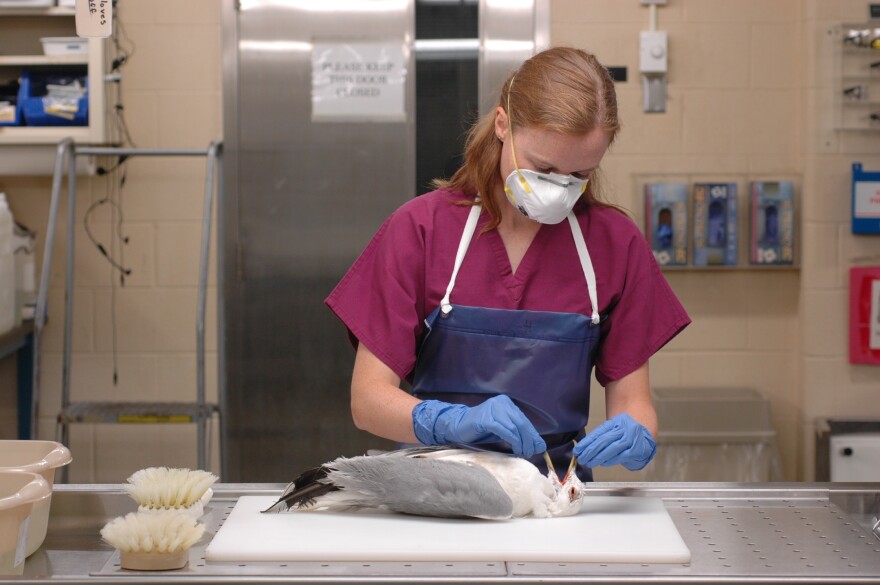In the last few weeks, roughly 600 birds have died along the shore of Lake Michigan. They washed up on the beaches within the Sleeping Bear Dunes National Lakeshore, with more dead birds reported on beaches in the Upper Peninsula.
Experts suspect the cause is avian botulism (the Michigan Department of Natural Resources has confirmed Type E botulism as the cause of death for some birds in the U.P. Test results are pending for the birds from Sleeping Bear Dunes, but several experts suspect Type E botulism there as well).
It’s a serious illness caused by a bacterial toxin, and it’s come and gone for decades in the Great Lakes region. You can learn more about the role invasive mussels and mats of algae play in the process here.
Dan Ray heads up avian botulism monitoring for the Sleeping Bear Dunes National Lakeshore.
“The birds lose the power to fly and they can’t keep their heads up so many of the birds actually find it safer to be out in the water, out in the lake, rather than the shore, and they’ll actually drown because they can’t keep their head up out of the water,” he says.
Ray sends the data he and his team collect to the U.S. Geological Survey’s National Wildlife Health Center.
Jenny Chipault is on the center’s Wildlife Epidemiology Team. She says that avian botulism type E has affected birds in our region on and off since the 1960s.
“And in 2006, there were a lot of dead birds observed mostly on the shores of Sleeping Bear Dunes National Lakeshore. And that kind of prompted further investigation into the dynamics of botulism type E mortality on Lake Michigan,” she explains.

And it’s not just Lake Michigan - she says the same pattern has been observed on other Great Lakes as well.
Chipault says the botulinum toxin can be found in different prey items.
She hopes that by finding which prey items harbor the toxin, and where they can be found, researchers might someday be able to help some birds avoid the toxin.
“We could maybe deter birds from using those areas, probably especially during migration. So that’s kind of the big overall goal, but it being such a huge lake and a complex system, it’s going to take some more research to get there,” says Chipault.






